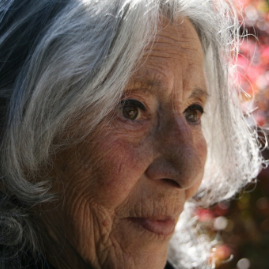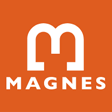Judah L. Magnes Museum
The Magnes Collection of Jewish Art and Life is based on the holdings of the former Judah L. Magnes Museum, one of the first Jewish museums in the United States, founded in Berkeley in 1962 by Seymour Fromer and his wife, Rebecca Camhi Fromer.
Reflecting the guiding concerns of American Jewry after the Holocaust, the Magnes focused on preserving the legacy of vanishing communities around the world. Its founding paralleled the establishment of Jewish studies as an academic field, and the museum continued to involve leading scholars, including UC Berkeley faculty and students, in the development and interpretation of its holdings. Responding to the ethos of pluralism of the 1960’s, the Magnes expanded the canon of Jewish cultural history, integrating visual, musical and material cultures with traditional text-focused approaches.
The museum’s first significant acquisition, in 1967, was the Siegfried S. Strauss Collection, which included hundreds of Jewish ritual objects, documents, rare books and manuscripts from Europe. Subsequently, its unique perspective led to collecting beyond the boundaries of Western societies, and embraced the Jewish cultures of North Africa, the Middle East, and Asia. At the same time, the Magnes pioneered the study and documentation of regional Jewish history in the American West.
Over the years, through purchases and generous gifts, the Magnes has continued to expand the scope of its collection including modern and contemporary art, music, and rare books and manuscripts in Hebrew and other Jewish languages.
These pages are dedicated to the people and the institutions that made the programs of the Magnes a reality for almost five decades, and record the history of the Magnes through its exhibitions, public programs, and publications.
“Before the ashes there was life, and that life would be celebrated, and perhaps if we were lucky would constitute restoration of the name and serve to sanctify it… And so, the Judah L. Magnes Museum began with a wealth of mind, the desire to share, to make real through something that could be seen and touched, a part of the collective identity we had no other way of knowing.”
Rebecca Camhi Fromer

Timeline
1960
Seymour Fromer, director of the Jewish Education Council of Alameda and Contra Costa Counties, finds the graduation picture of Rabbi Judah L. Magnes in an 1894 Oakland High School yearbook. The idea for a museum in his name is first considered.
1961
Seymour Fromer and his wife Rebecca Camhi Fromer meet with Judah L. Magnes’ widow, Beatrice Untermeyer, while on a trip to Israel. The Fromers gain her support to start a museum named after Judah L. Magnes (1877-1948), a former Oakland resident who became a renowned rabbi, lecturer, political activist, and the first Chancellor and subsequently the first President of The Hebrew University of Jerusalem. Martin Buber, the noted philosopher, agrees to serve on the advisory council.
1962
The Judah L. Magnes Memorial Museum is founded and is housed in one room in the Oakland-Piedmont Jewish Community Center. During its first year, the museum receives the Koretsky Collection of rare books and manuscripts. The Magnes also receives a collection of memoirs from Institute for Righteous Acts about the rescue of Jews by non-Jews during the Nazi persecutions. Its founding curator of Judaica is Ruth Eis, who guides the development of the Judaica collections and establishes the museum’s international reputation with her scholarly publications covering the museum’s Hanukkah lamps, Torah binders, and other objects.
1962
The museum’s collection of Judah Magnes’ personal papers and objects is exhibited at the Oakland Public Museum.
1963
- The museum forms the Commission for the Preservation of Pioneer Jewish Cemeteries and Landmarks, an organization focused on restoring and preserving pioneer Jewish cemeteries of the Gold Rush.
- First rescue mission: Mr. Arthur Katz visits Egypt; catalogues and locates Jewish ceremonial objects; negotiates and brings some objects out of Nasser’s Egypt.
1964
- The Magnes moves to new site, a six-room space above the Parkway Theater on Park Boulevard in Oakland. The museum now has more than 5,000 items in its collection and begins to hold regular visiting hours.
- The Magnes publishes its first book, “Pioneer Jewish Cemeteries and Communities of the Mother Lode,” by Robert E. Levison.
1965
Film Festival Judaica, a precursor of the San Francisco Jewish Film Festival, begins as part of the Magnes’ recently established Jewish Media Center.
1966
The museum purchases and moves into the historic Burke mansion at 2911 Russell Street, Berkeley.
1967
- The Western Jewish History Center is founded. Professor Moses Rischin is named director of the archive and research center, which focuses on the life, and culture of Jews of the thirteen western United States.
- Rabbis Bernard Kimmel and Yosef Miller conduct Magnes Museum rescue missions for objects of Jewish culture in India and Iran.
1968
- Museum acquires the Siegfried Strauss collection, a major collection of Judaica consisting of more than 500 ceremonial objects.
- Women’s Guild formally organized to conduct tours of the exhibits, act as a public relations arm of the museum, and to assist in researching and securing sources for new collections.
1968
The Magnes invites David Moss to serve as artist-in-residence with a studio in the old carriage house of the Burke mansion. Moss is a pioneer in custom-made kettubot, the marriage contract that must be signed between Jewish grooms and wives. Moss hand-paints and illustrates the ketubbot, creating colorful contracts that contrast sharply with the typical printed, drab versions. The Magnes holds an exhibit of Moss’ work in 1969, sparking a resurgence of interest in decorative kettubat that has continued for more than 35 years.
1969
The Magnes initiates production of Jewish-American Hall of Fame series of commemorative medals in collaboration with Mel Wacks. The first medal honoring Judah L. Magnes was created by sculptor Victor Ries, then artist-in-residence, at the museum. Subsequent medals honored Emma Lazarus, Golda Meir, and Henrietta Szold, among others.
1974
- The Magnes is the first Jewish museum in the United States to be accredited by the American Association of Museums.
- Field collecting expeditions are conducted in Morocco and Israel.
1976
The Magnes launches first the Jewish theme video project through its department of photography and film. The Magnes will go on to produce films documenting Jewish life in the Gold Rush and the relationship between Jews and Buddhists, among other topics.
1981
Reutlinger Gallery, named after philanthropist Jacques Reutlinger, is opened. Museum begins renovation of historic Burke mansion, adding 1,000 square feet of exhibition space.
1984
The Docent Outreach Program is organized to enable Women’s Guild to develop and implement a program of interpretive tours, lectures and public outreach programs.
1985
- The Art & Culture Council, a museum support group, is founded.
- The John S. Sills Memorial Lectureship is established to hold annual lecture on Judaic art, history or culture.
1986
The Harry and Dorothy Blumenthal Rare Book and Manuscript Library is completed.
1989
The museum changes its name from Judah L. Magnes Memorial Museum to Judah L. Magnes Museum.
1991
The Magnes receives a $150,000 matching grant from the National Endowment for the Humanities to endow the Blumenthal Chair of Judaica.
1992
The Western Jewish History Center receives a major collection with the donation of the papers of Mt. Zion Hospital, San Francisco, 1887-1990.
1994
The first Annual International Jewish Video Competition is held. It will continue until 1999.
1998
Seymour Fromer, director and co-founder of The Magnes, becomes Director Emeritus.
2000
The Magnes marks the millennium with a major exhibition, Telling Time: to everything there is a season.
2002
The Judah L. Magnes Museum and the Jewish Museum San Francisco merge together into a new institution called The Magnes Museum. The new institution has a goal of building two new museum buildings, one in San Francisco and one in Berkeley.
2003
- Disagreement over the direction of the merged museum prompts dissolution of the merger. The Judah L. Magnes Museum reverts back to a separate entity, governed by its own board of directors.
- The Judah L. Magnes Museum reopens its galleries at 2911 Russell Street, Berkeley and launches a series of exhibitions that bring new relevance to the museum’s collections.
2004
The Board of Trustees launches a campaign for the Magnes to develop an accessible facility in downtown Berkeley and endow museum programs.
2008
The Museum’s collections begin to be digitized and are made available worldwide through an innovative archive-library-museum online database.
2009
The Judah L. Magnes Museum enters negotiations with the University of California, Berkeley, with the goals of transferring its collections and operations to the Berkeley Campus.
2010
Following the gift of the collections of the Judah L. Magnes Museum to the University of California, Berkeley, The Magnes Collection of Jewish Art and Life is established as a Research Unit of The Bancroft Library, with support from Warren Hellman, Tad Taube and the Taube Family Foundation, and the Koret Foundation. The Judah L. Magnes Museum becomes The Magnes Museum Foundation, a supporting organization.
2012
The new 18,000 square feet facility of The Magnes Collection of Jewish Art and Life is inaugurated in downtown Berkeley.
2015
The Magnes Collection of Jewish Art and Life is detached from its initial affiliation with The Bancroft Library, and becomes academically independent, along with the recently established Berkeley Center for Jewish Studies. Professor George Breslauer, Executive Vice-Chancellor Emeritus, is appointed as Faculty Director.
2017
The Magnes acquires the Taube Family Arthur Szyk Collection.
2018
The Magnes acquires the Roman Vishniac Archive.
